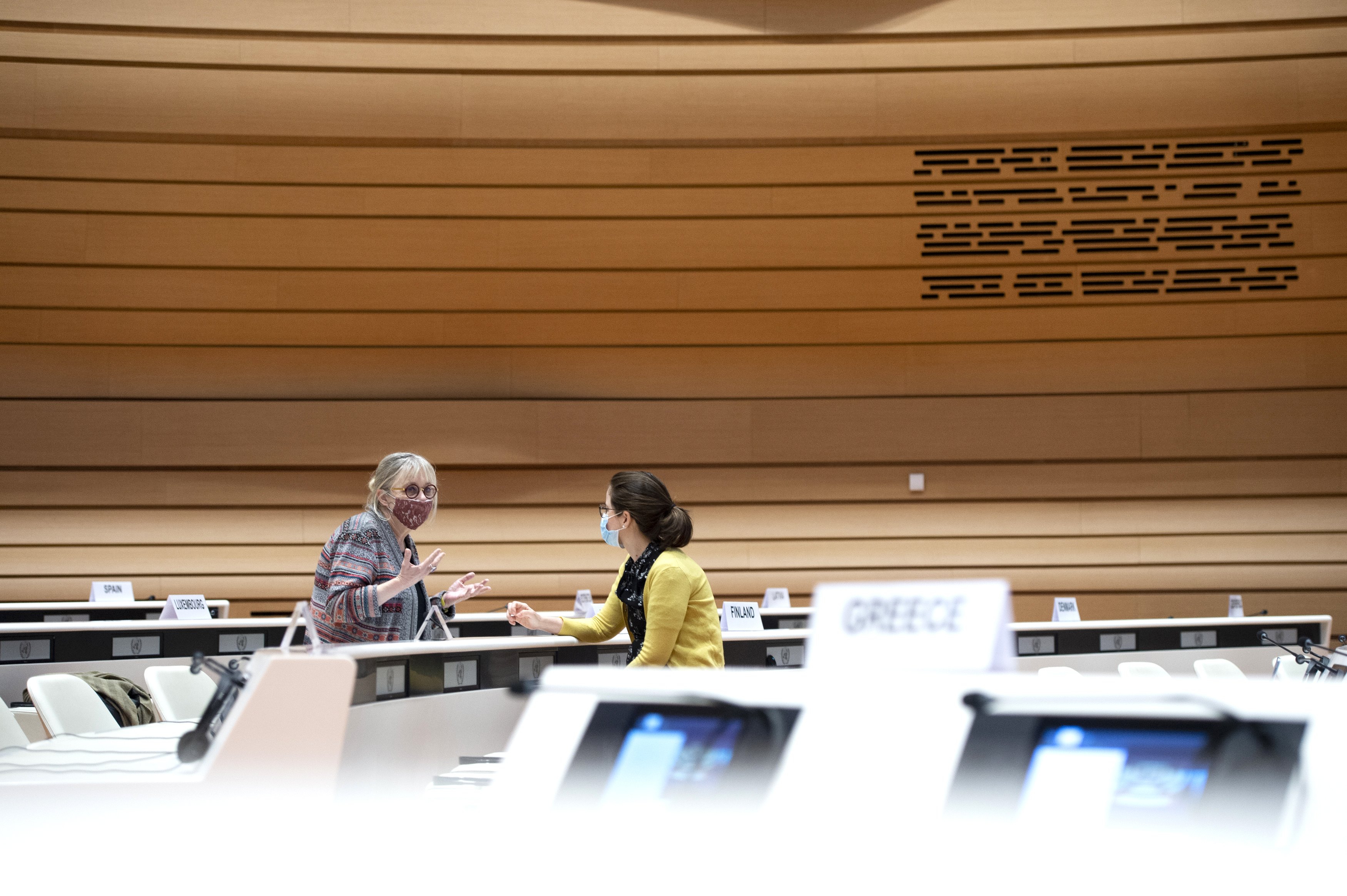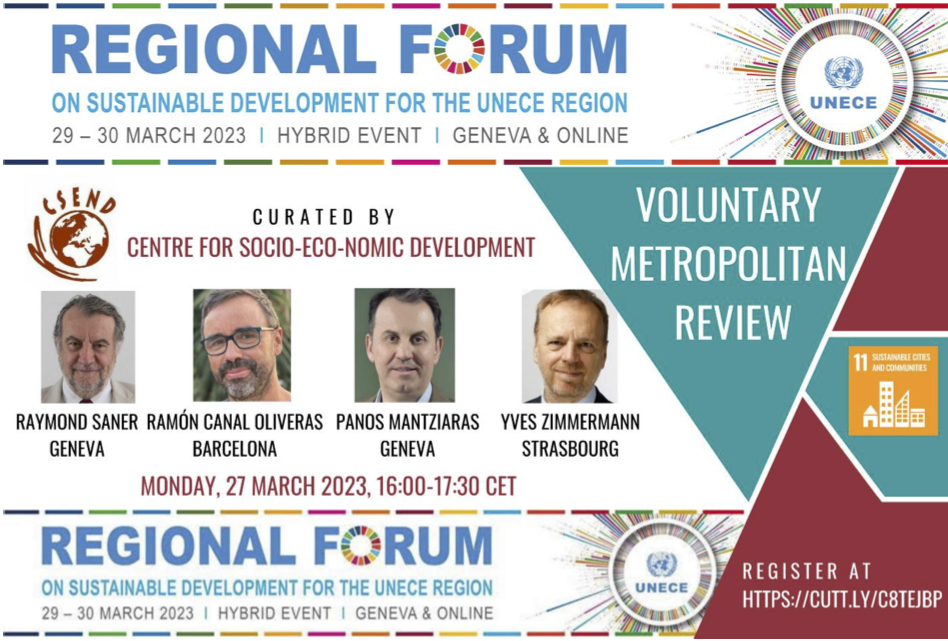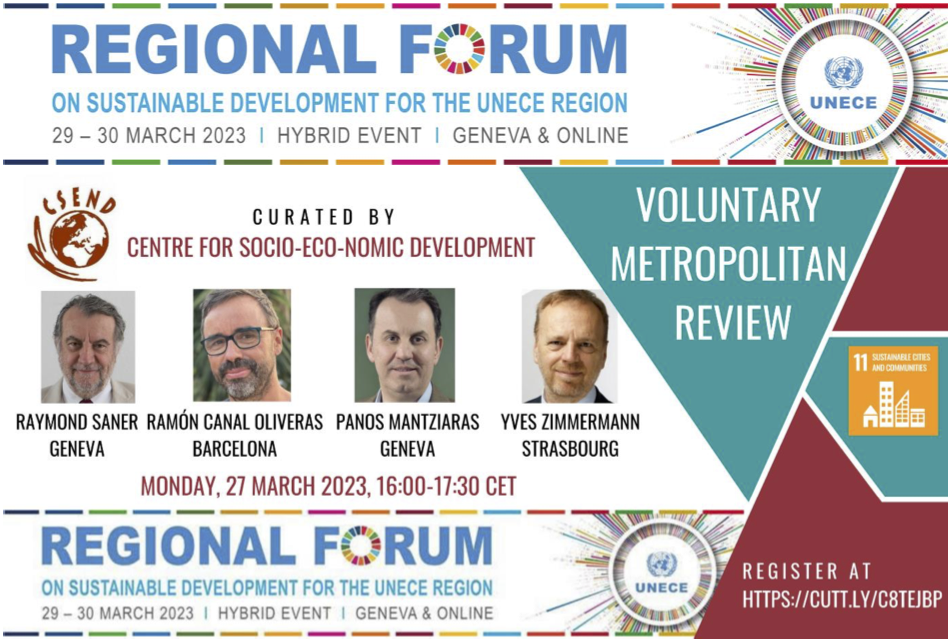Background
According to the OECD, metropolitan areas are defined as a population between 500 000 and 1.5 million people. The UNECE region has several such metropolitan areas which are often agglomerations of different separate cities and towns which became integrated into a larger size urban areas. These separate areas often retain some form of autonomy making it very challenging for the larger metropolitan agglomeration to coordinate sustainable growth of its infrastructure, personal mobility, safeguarding food security, managing waste and social development such as education, health, security and housing rules and regulations. This side event focused on the implementation of SDG 11 at a metropolitan scale which goes beyond the traditional VLR reporting and introduces instead a VMR (Voluntary Metropolitan Review).
This side event was organised as an opportunity to learn from experiences made by the metropolitan areas of Strasbourg, Barcelona and Grand Genève. Representatives gave an overview of their SDG implementation and highlighted a particularly difficult moment in their urban growth process inviting the audience to brainstorm how they might have solved the respective difficulty. The critical moments consist of the following:
Barcelona: The 2030 Agenda of Barcelona, a legitimate tool for the assessment and balancing of social, economic and environmental needs;
Geneva: Prospective visions for Greater Geneva. Inhabiting the City-Landscape of the 21st Century
Strasbourg: The PACTE, a community of territorial actors in dialogue and action to achieve the ecological transition; Conclusions by CSEND.
CSEND, Geneva; Coordinació Territorial i Esports; Fondation Braillard Architectes; Ville et Eurométropole de Strasbourg




